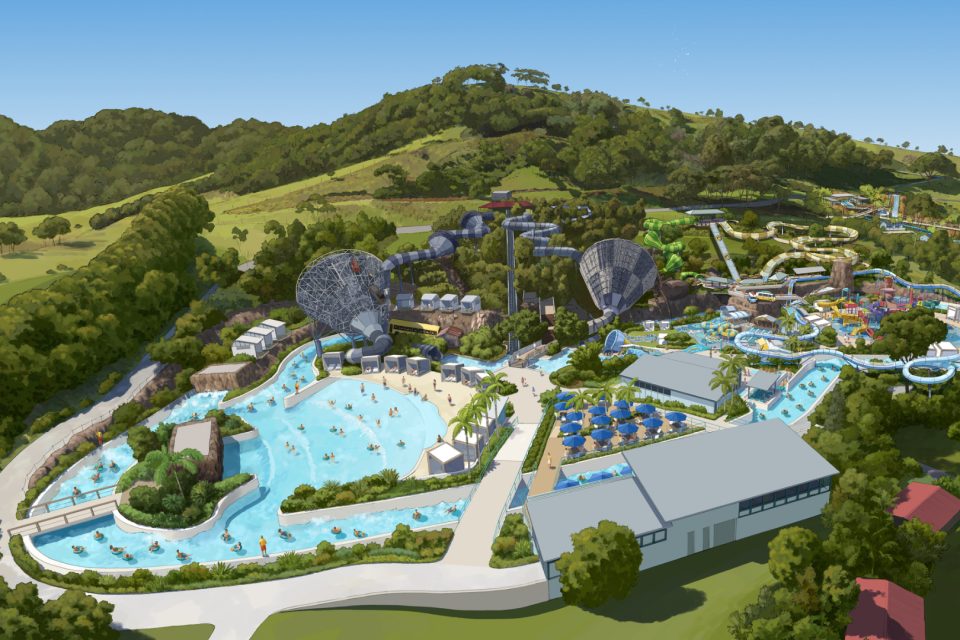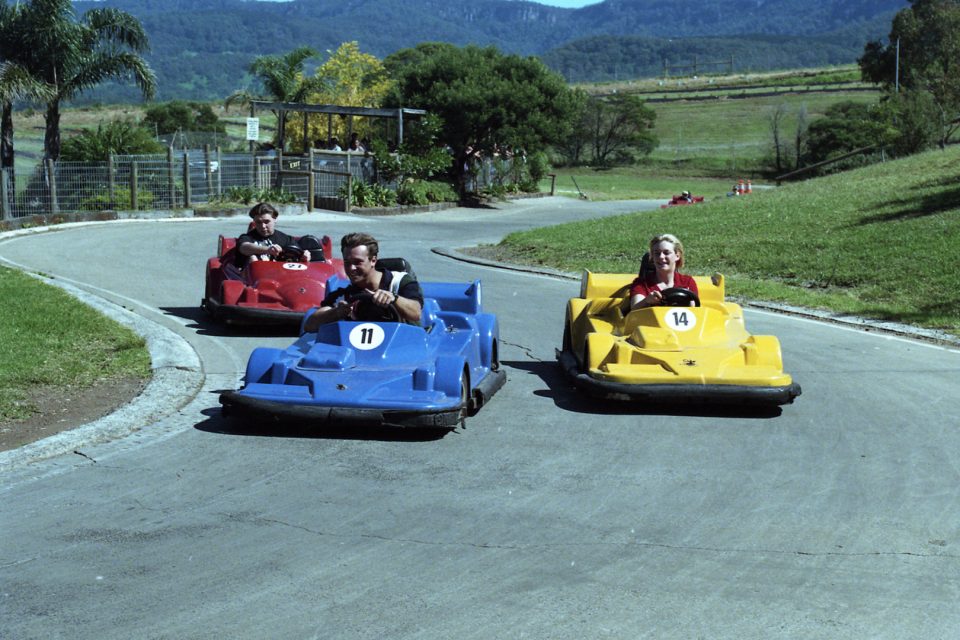
Jim Eddy is looking forward to a strong season to help move forward with the next stage of the park. Photo: Kellie O’Brien.
It takes a visionary mind with a penchant for risk to survive the 43-year ride to turn a cow paddock into one of NSW’s biggest water theme parks.
Jamberoo Action Park owner Jim Eddy is one such person.
Since buying the farm with his family nearly 50 years ago and starting the park in 1980, Jim has taken big risks and known plenty of challenges.
Those challenges never stop, as he now focuses on the predicted long hot summer, which brings with it a strong season to fund the next stage of its Kangaroo Island Master Plan.
Created 15 years ago, the plan’s next stage includes a major river system twice the length and more action than Rapid River, as well as another wave pool.
“I do believe that people that do these things are different – an enthusiasm and energy for high risk,” Jim said.
“See, I’ve tried other things. I started as a surveyor, I went into real estate brokerage for 10 years, and so I experienced other industries and nothing really struck me.
“And then when I got involved in this, I really came alive internally.”
All these years later, he admits he still feels that.
That’s not to say there haven’t been moments that have knocked his confidence.
Being a high-capital family operation, there’s no access to international funds and banks don’t look kindly on such operations, so he’s had to borrow against other assets.
“Every time you do something, you’re putting the whole show on the line,” he said.
“You’ve got to be prepared to do that; you can’t be risk averse.
“We’ve had a restaurant and function centre in Wollongong and that’s been challenging too, but nothing compared to this.”
The farm was bought in 1974 for his brother-in-law Rob to become a dairy farmer.
Robert Easts, who started as a dairy farmer and went on to build an empire of caravan parks, offered Rob the farm, but Rob didn’t have the capital so Jim got involved.
Eighteen months in, the government took away their milk quotas, reducing their income by 20 per cent and leaving them “up to here with debt”.
Rob’s brother, hot snow skier Peter, was inspired by the film Green Snow about the Olympic team in Italy grass skiing in the Italian Alps.
Peter, Rob and Jim ran with the idea, starting the world’s first grass ski park, complete with an abandoned chairlift from Charlotte’s Pass that was “obsolete, wasn’t working and was a disaster from the word go”.






While grass skiing was short-lived, Jim reflects on it as a “special time because we were all good mates”.
“We loved what we were doing, so it cemented your affection for it.
“Mind you, things happened along the way that killed that affection.
“It was the drought, we’d spent all this money, and people were hurting themselves because the ground was like concrete.
“I said ‘we’ve got to do something’, so I saw a waterslide on the Gold Coast and I came back and said ‘I’ve found it’.”
Being more conservative, Rob and Peter felt they lacked the money but Jim told them to “worry about that once we get it going”.
“We didn’t have any money for it but we paid for it within the first season,” he said.
Eventually, Jim bought Rob and Peter out of the business.
As the park adapted to drought, a need to increase capacity with new rides and repurposed the chairlift for bobsledding. Jim realised things needed to be better planned.
Every 10 years the park produced another master plan with one or two rides, but the 2008 Kangaroo Island Master Plan had six rides – and is still being implemented.
While earlier attractions like the speedboats and racing cars required Jim to be innovative with dams and race tracks, today innovation is driven by technology.
That technology resulted in the installation of Velocity Falls last year, after demand for a new thrill-seeking ride, and what will be one of the world’s best river rides and a wave pool to help increase capacity next year.
“We’re about getting it done as quickly as we can because I’m not getting any younger,” he said.
“It’s not just a long hot summer we need, but we’ve got to get the summer on the days we need it.
“I remember one of our worst seasons in 1989.
“We did a major upgrade in 1988 and in 1988 on 14 December, it started to rain and it didn’t friggin’ stop.”
That rain lasted two seasons and was “dismal” for the park.
It was not unlike the recent bushfire season, COVID lockdowns and then wet summer, which was “probably one of the most challenging times in our history”.
With so much still to do, Jim isn’t slowing down anytime soon.
“If you want to be in this industry, you have to keep at it,” he said.
“If you didn’t enjoy it, the burden would be enormous.”
If the weather isn’t favourable this season, the master plan will simply be put off a year.
“We’re keen to get it finished because that really is a combination of the original goal way back in the early 80s, which said the only way for us to be successful is to build something that’s of world standard and world-class,” he said.
“If we can’t do that, we’re always going to struggle and we’re always going to be seen as a regional thing.
“What we’re marching towards is achieving that goal and that ride there will basically do it.”

















